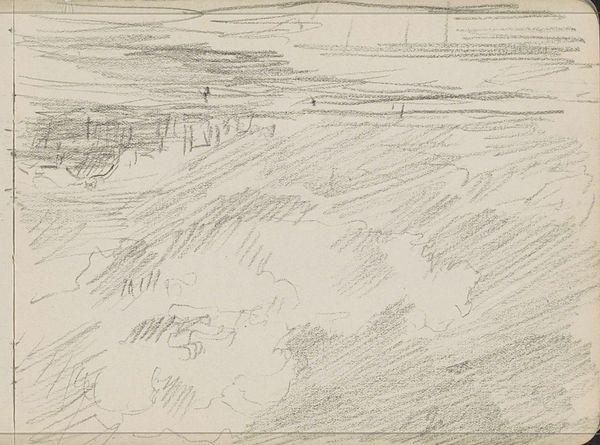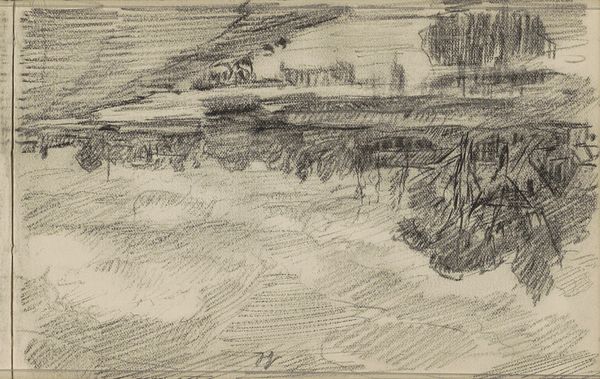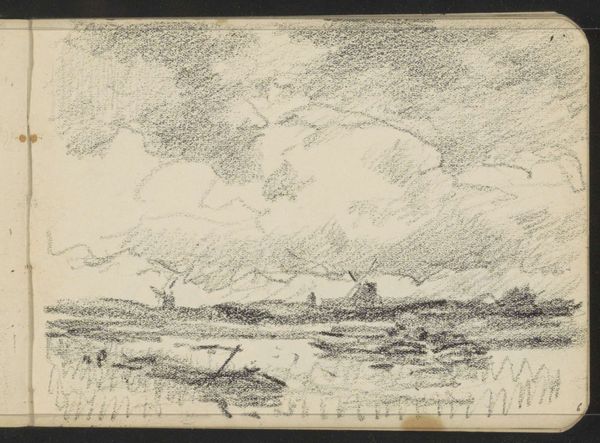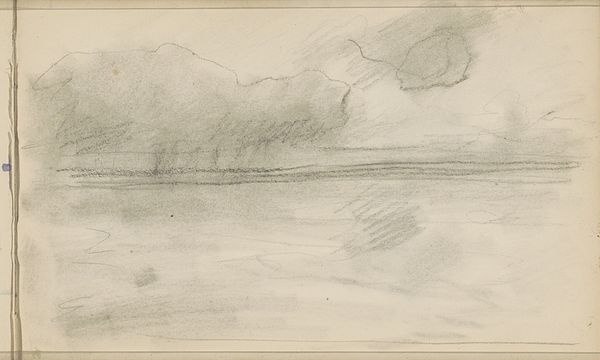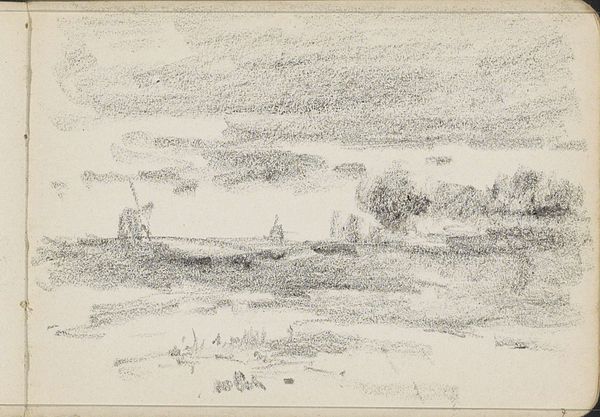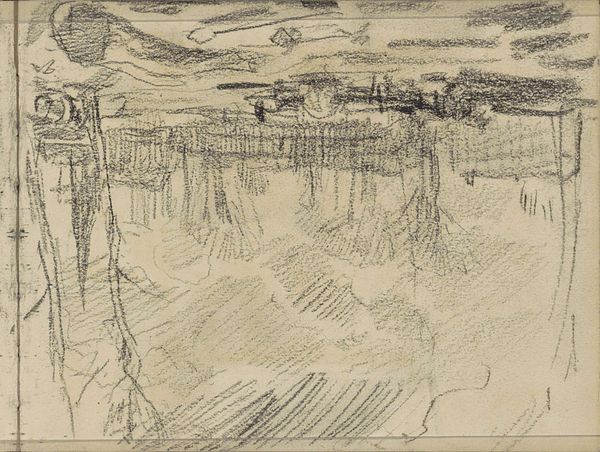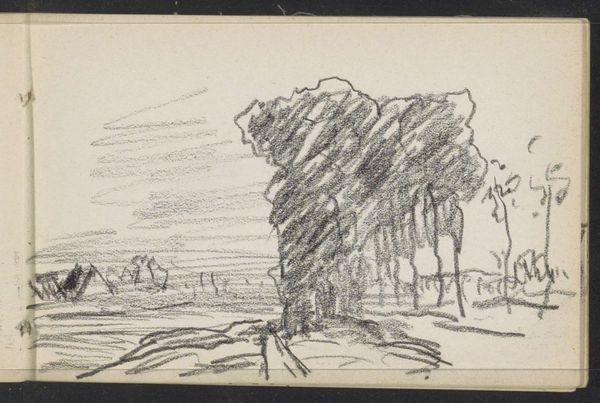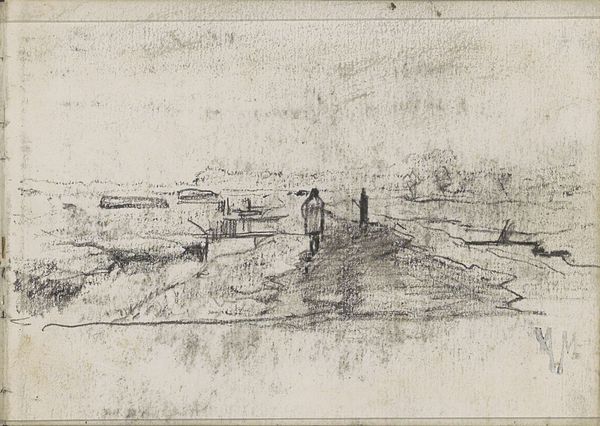
Copyright: Rijks Museum: Open Domain
Curator: Here we have Isaac Israels’ “Stadsgezicht, mogelijk in Amsterdam,” a cityscape drawing, likely dating from between 1886 and 1934. Editor: My immediate reaction is its suggestive incompleteness. It looks as if a memory is barely captured. There's a delicacy, almost melancholy in the way the buildings fade into the sky. Curator: Indeed. Israels used pencil and perhaps pen to create this evocative piece, very characteristic of impressionist sketchwork from personal sketchbooks of the time. What stands out to me is the roughness; it is like peeking into the artist’s direct perception and thought process as it’s rapidly put down onto the page. Editor: Agreed. The linear quality also allows us to decode shapes almost architecturally, despite the sketchy form. I see how the artist used shading and contrast to emphasize certain planes, creating a sense of depth. It has the basic structural principles that inform more finished works. Curator: Absolutely, and in considering it further, there is the context of artistic labor. As it is an intimate sketch, the act of drawing itself becomes visible as labor. Quick sketches were common commercial material in this period. Do you find it is defined by commerce? Editor: Perhaps partially; however, this drawing's power is how Israels distilled an urban moment down to its essential structural and emotional qualities. Note how lines are sparse but descriptive—look, for example, how effectively minimal dark shading is. That formal language speaks to something beyond mere product. Curator: Perhaps! The means of artistic production always reflect larger historical conditions, and artistic movements. It all makes its way into the picture as we read it. Editor: Well, whatever its place in production history, this cityscape is beautifully balanced. I noticed how, in terms of semiotics, even unfinished marks and their arrangements add new information and perspective. Curator: It really draws the viewer in! It offers a raw, yet refined glimpse into a world caught between the artist's eye and a specific socio-economic era. Editor: And those sketches are an absolute masterclass on effectively capturing the feeling of a place using economical means.
Comments
No comments
Be the first to comment and join the conversation on the ultimate creative platform.

